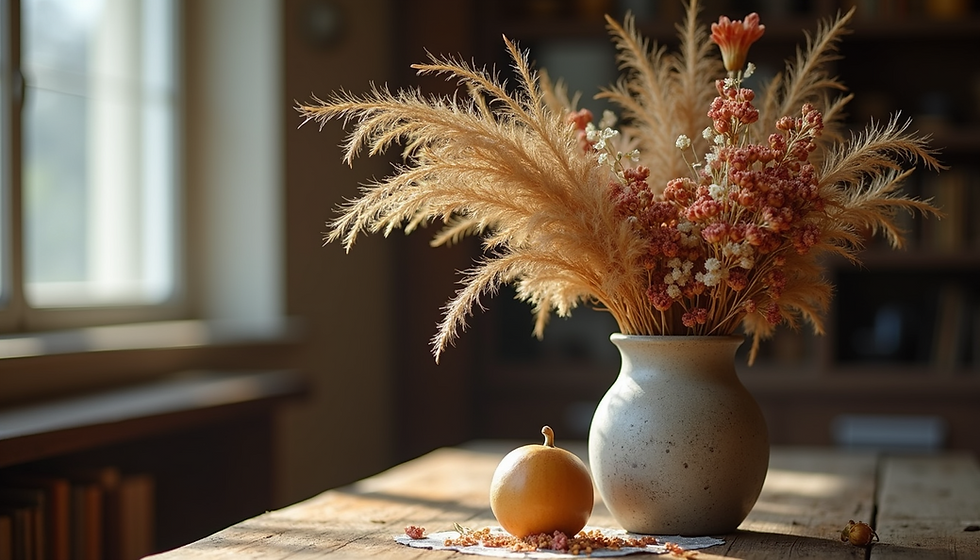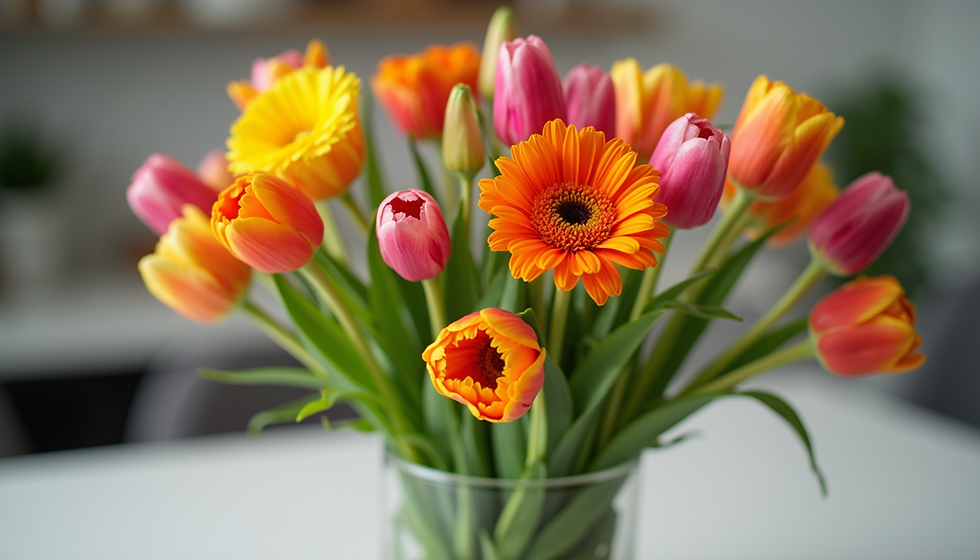Deadly Beauties Unveiled: Recognizing Toxic Flower Species for Pet Safety and Floral Enthusiasts
- Blossom & Cloth

- Jul 18
- 4 min read

Flowers can light up any room, bringing in a burst of color and joy to our lives. However, for pet owners, it is crucial to know that not all flowers are safe for your furry friends. Identifying toxic flower species protects your pets while allowing you to enjoy beautiful blooms in your home.
The vibrant colors and delightful scents of flowers can easily disguise their harmful effects. In this post, we reveal a selection of common toxic flowers and their dangerous properties, so you can make smart choices whether you love floral arrangements or you’re dedicated to keeping your pets safe.
The Allure of Beautiful But Deadly Flowers
Flowers symbolize love and beauty, but many also harbor toxic compounds that can be harmful to pets and children. For pet owners, this creates a real risk, as curious animals often nibble on floral decorations. In fact, according to the ASPCA, about 700 plants and flowers are toxic to pets. This makes it essential to stay informed about which species could pose a threat.
Common Toxic Flower Species
1. Lilies
Lilies (Lilium spp.) rank among the most dangerous flowers for cats. Even a tiny bite of this plant can lead to severe kidney failure. A study showed that 70% of cases of lily poisoning in cats result in acute kidney injury, often needing emergency veterinary care. To safeguard your feline companions, steer clear of bringing lilies into your home.
2. Oleander
Oleander (Nerium oleander) is a striking shrub often found in gardens, but it harbors dangerous toxins. Ingesting even a few leaves can result in serious health issues for both pets and humans. Symptoms of oleander poisoning include severe drooling, lack of appetite, and life-threatening heart complications. According to toxicology studies, ingestion of oleander can result in death within hours if untreated. Keep this toxic plant well away from your pets.
3. Azaleas and Rhododendrons
Azaleas and Rhododendrons (Rhododendron spp.) may look beautiful in your ornamental garden, but they can be harmful too. They contain grayanotoxin, which can severely disrupt your pet's gastrointestinal and cardiovascular systems. Symptoms of ingestion can include vomiting and diarrhea. Just a small amount can lead to serious reactions, and it's reported that around 50% of pets who consume even a few leaves will face health complications. Choosing safer plant alternatives is a wise decision for your garden.
4. Foxglove
Foxglove (Digitalis purpurea) is loved for its tall, elegant blooms, but it is dangerous for pets. This flower contains compounds that can cause cardiac issues and even lead to death. Symptoms can range from irregular heartbeat to gastrointestinal distress. Avoid planting foxglove if you have pets that might be tempted to nibble on its leaves or flowers.
5. Calla Lily
Calla lilies (Zantedeschia spp.), popular in many floral arrangements, can be hazardous, particularly to dogs and cats. All parts of this plant contain calcium oxalate crystals, causing irritation and swelling in the mouth and throat. If consumed, pets may show signs of drooling, vomiting, and difficulty swallowing, often requiring veterinary attention. With a quick response, 90% of cases can be managed successfully, but why take the risk?
Recognizing Symptoms of Flower Toxicity
Understanding the symptoms of flower toxicity can help protect your pets. If you suspect your pet has ingested a toxic flower, look for signs such as:
Vomiting
Diarrhea
Excessive drooling
Lethargy
Difficulty breathing
It is crucial to contact your veterinarian immediately if you notice any of these signs. Quick action can be life-saving.
Prevention: Creating a Safe Environment
Creating a safe environment for pets around flowers requires proactive measures.
Educate Yourself
Discover which floral species are toxic. Keeping a list handy helps prevent bringing harmful plants into your home or garden. You might want to note that over 20% of calls to veterinary poison control centers are due to plant poisoning, so knowledge is key.
Choose Non-Toxic Alternatives
Opt for safer floral options. Flowers such as sunflowers, roses, and orchids are not only beautiful but also safe for pets. These can brighten your space without causing harm. When purchasing flowers or plants, making informed choices is essential.
Keep Floral Arrangements Out of Reach
If you choose to keep toxic flowers, display them high out of reach of your pets. Use shelves or tables where pets cannot access arrangements. Consider using barriers if needed to ensure curious pets stay safe.
Enjoying Flowers Safely
You do not have to give up on flowers entirely. By selecting non-toxic species and being aware of potential risks, you can create a stunning and pet-friendly environment. Here are a couple of tips to ensure you enjoy flowers responsibly:
Research: Use trustworthy resources to learn about both toxic and non-toxic flowers before purchasing.
Monitor: Keep an eye on your pets around any new floral arrangements to quickly address any issues.
Educate: Share your knowledge with fellow pet owners and floral enthusiasts to raise awareness about flower toxicity.
Safe Blooming Ahead
Integrating flowers into your life adds joy and beauty, but for pet owners, ensuring that these desirable blooms do not pose a risk is crucial. Familiarizing yourself with toxic floral species, recognizing toxicity symptoms, and taking preventive steps allows pet lovers to enjoy flowers safely.
No flower is worth risking the health of your furry friends. With the right information, you can cultivate a harmonious space where both pets and flowers flourish together.
Stay informed, be cautious, and enjoy the beauty of flowers without compromising your pets' health. Happy blooming!




Comments